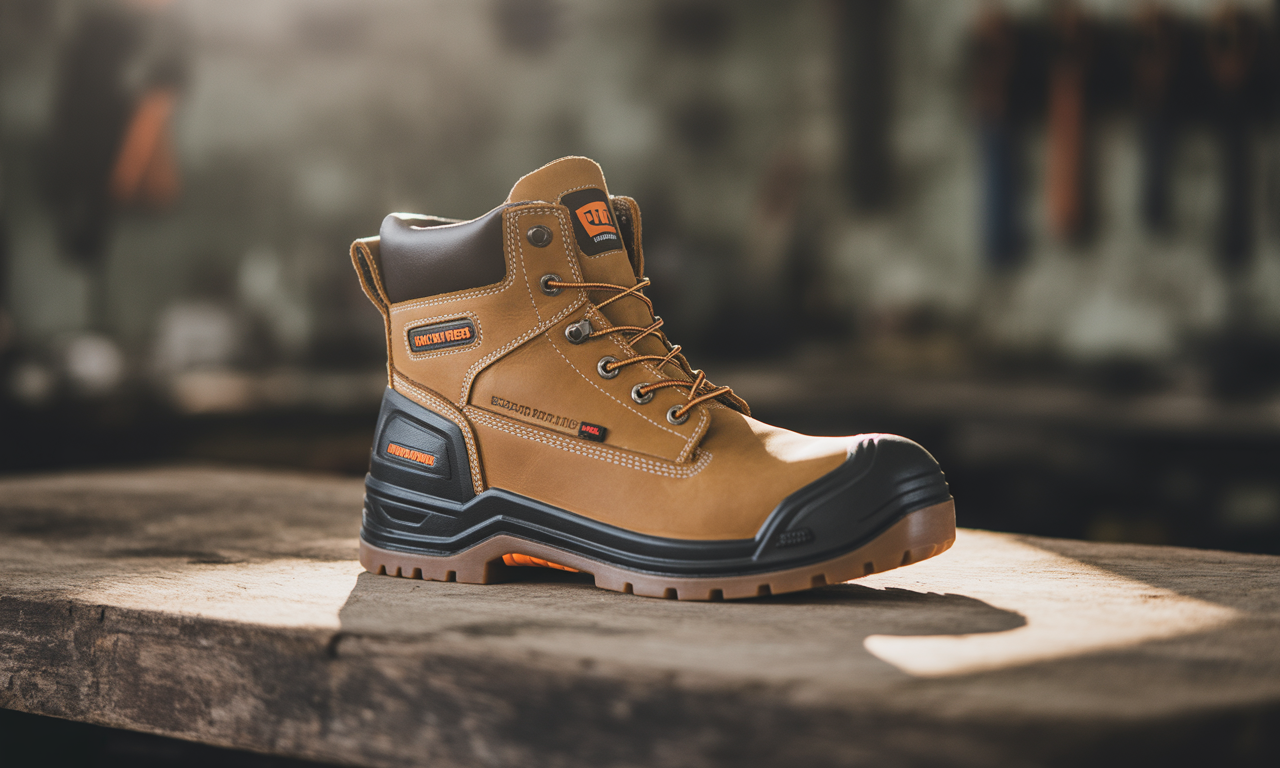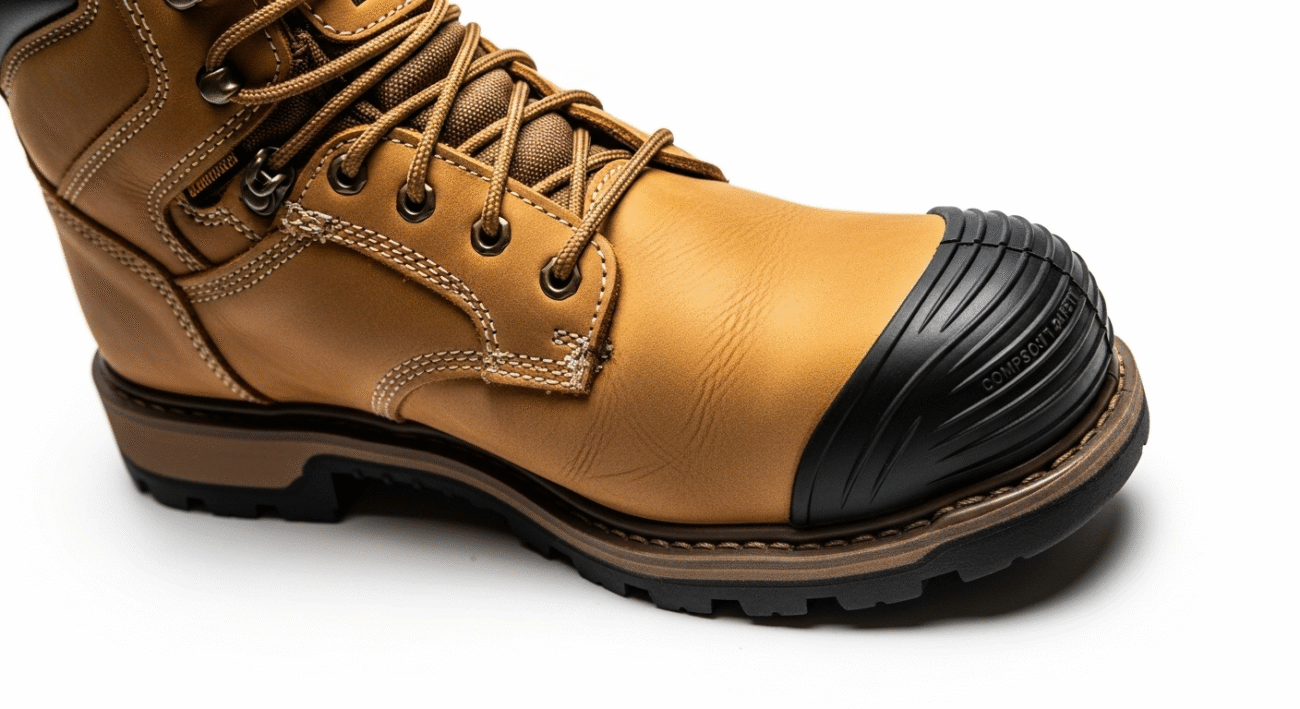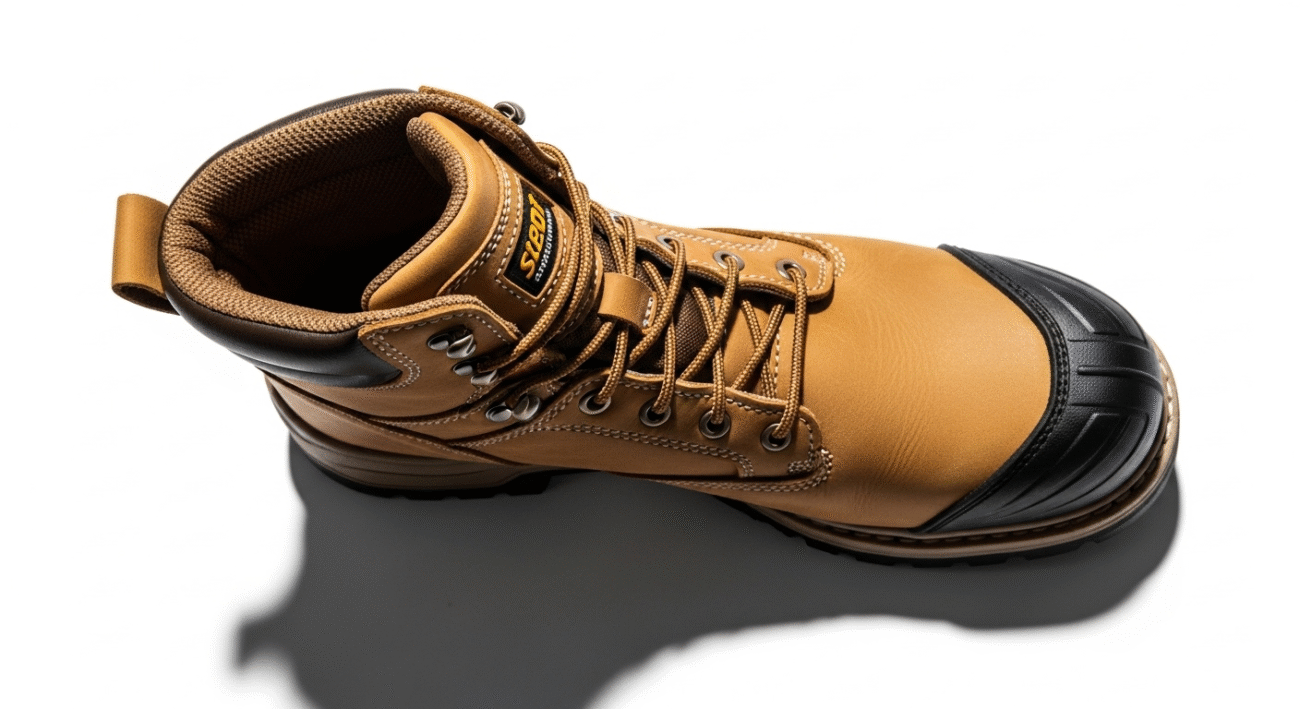Safety Work Boots: The Ultimate 2025 Guide to Safety Work Boots: A Critical Component of Your Workwear Clothing for June 2025.
 In demanding workplaces, quality safety gear is the first and best line of defense against injuries. For millions of workers across industries, safety work boots are a non-negotiable component of daily workwear. As summer 2025 approaches, new technologies, materials, and regulatory changes are redefining what the best safety work boots look—and feel—like. In this comprehensive guide, we’ll explore why safety work boots are indispensable in 2025, the latest innovations, tips for choosing the right pair, care recommendations, and top product examples. Whether you’re working on construction sites, in manufacturing, or in logistics, this guide is your roadmap to finding the safest, most comfortable boots for June 2025 and beyond.
In demanding workplaces, quality safety gear is the first and best line of defense against injuries. For millions of workers across industries, safety work boots are a non-negotiable component of daily workwear. As summer 2025 approaches, new technologies, materials, and regulatory changes are redefining what the best safety work boots look—and feel—like. In this comprehensive guide, we’ll explore why safety work boots are indispensable in 2025, the latest innovations, tips for choosing the right pair, care recommendations, and top product examples. Whether you’re working on construction sites, in manufacturing, or in logistics, this guide is your roadmap to finding the safest, most comfortable boots for June 2025 and beyond.
Why Safety Work Boots Matter in 2025
Occupational safety has always been a pressing concern, but with increased automation, urban construction, and more complex workplaces, risks have evolved. In 2025, OSHA and international standards are stricter, pushing businesses and employees to upgrade safety gear.
1. Preventing Injuries
Statistics from the U.S. Bureau of Labor Statistics reaffirm the sobering reality: foot injuries can be debilitating and costly. Annually, thousands of workers experience punctures, crushing injuries, slips, and burns. Proper work boots provide:
- Impact protection from dropped tools or materials.
- Puncture resistance from nails, screws, or sharp debris.
- Electrical hazard protection, especially for electricians.
- Slip resistance—crucial in wet, oily, or uneven conditions.
- Thermal protection, guarding against burns or frostbite.
2. Compliance with Workplace Regulations
Employers are legally required to ensure employees have adequate PPE, including appropriate footwear. In 2025, new ISO 20345:2023 and updated ASTM standards specify toe-cap requirements, puncture-resistant layers, and anti-slip coefficients. Choosing boots that meet or exceed these is not just smart—it’s the law.
3. Comfort for Increased Productivity
Modern work boots are not just about protection; they’re about comfort and fatigue reduction. With long shifts and demanding physical tasks, properly fitted boots with shock-absorbing soles can mean more energy at the end of the day and less risk of chronic pain or musculoskeletal disorders.
Key Features of 2025 Safety Work Boots
The best safety work boots in 2025 are a fusion of high-tech innovation and proven design. Here are the critical elements to look for:
1. Advanced Toe Protection
Traditionally, steel toe-caps were the standard. Today’s choices include:
- Steel toe-caps: Maximum protection against impact and compression.
- Alloy toe-caps: Lighter than steel, with similar protection.
- Composite toe-caps: Non-metallic, lighter, do not conduct cold or electricity. Increasingly made from carbon fiber or advanced polymers.
2. Puncture Resistant Midsoles
Midsoles have evolved to utilize:
- Kevlar or other ballistic fabrics: Offer flexible, lightweight, and complete penetration resistance.
- Steel plates: Still preferred in high-risk environments.
3. Slip, Oil, and Chemical Resistant Outsoles
2025 models feature:
- Multi-density rubber and TPU blends: Enhanced grip, longer wear.
- Self-cleaning lug patterns: Prevent buildup of mud or debris.
- Latest SRC-rated outsoles: Top performance on all tested surfaces.
4. Electrical Hazard & ESD Protection
- EH-rated boots: Protect against open circuits.
- ESD-compliant models: For electronics workers, prevent static build-up.
5. Waterproof & Breathable Materials
Leading brands use membranes such as:
- GORE-TEX® and similar: Waterproof yet breathable liners prevent sweating while keeping feet dry.
- Antimicrobial linings: Reduce odor, increase boot lifespan.

6. Metatarsal Guards, Ankle Protection, and Specialized Features
Some environments require:
- Metatarsal guards: Additional upper-foot protection.
- Ankle support for rugged terrain or ladder use.
- Insulation for cold climates or heat-resistant soles for foundries and welding.
7. Smart Technology in 2025
The latest boots incorporate:
- Built-in sensors: Monitor wear, alerting when safety features degrade.
- RFID tracking: Ensures compliance with issued gear.
- Custom orthotic integration: 3D scanning for perfect fit and fatigue reduction.
How to Choose the Best Safety Work Boots for Your Job
Selecting the right boot involves more than browsing for style or price. Consider these factors:
1. Assess Your Work Hazards
List the most likely risks you face:
- Heavy falling objects? Choose solid toe protection.
- Sharp floor hazards? Seek out the best puncture-resistant midsoles.
- Wet or sleek floors? Prioritize high slip resistance.
- Cold/freezing conditions? Look for insulated and waterproof boots.
- Electric hazards? Confirm EH or ESD compliance.
2. Know the Regulations
Check with your company safety officer or OSHA standards for any specific boot certification required, such as:
- ASTM F2413-18
- ISO 20345:2023
Brands must label compliance clearly.
3. Proper Sizing and Fit
Try on boots with your work socks and walk, squat, climb, and stand. A great fit will reduce blisters, pinching, and discomfort. Many brands now offer multiple width options and even half sizes.
4. Weight and Flexibility
- Lightweight composite boots are ideal for those on their feet all day or moving quickly.
- Heavier boots may offer more protection but can increase fatigue.
5. Specialty Features
- Zip sides: Quick on/off without lacing.
- Metatarsal guards: For foundry or materials handling.
- Mud-release treads: For agricultural or construction sites.
6. Price vs. Return on Investment
It’s tempting to buy bargain boots, but investing in quality usually means:
- Longer lasting boots
- Better foot health
- Higher safety guarantees
Top Safety Work Boot Brands and Recommendations for 2025
Here are some of the standout brands and models making waves in 2025, based on user reviews, safety features, and industry adoption.
1. Timberland PRO® Hypercharge CarbonToe
- Best for: All-around construction, energy, and logistics.
- Features: Composite toe, anti-fatigue sole, waterproof membrane, slip and oil resistant.
- Why it’s great: Lightweight without compromising on protection.
2. Caterpillar® Invader 2.0 ESD
- Best for: Manufacturing, electronics, automotive.
- Features: ESD compliant, composite toe, durable synthetic upper.
- Why it’s great: Reduces risk of static discharge, excellent comfort.
3. KEEN Utility® Fort Wayne MetGuard
- Best for: Heavy industry and foundries.
- Features: Steel/composite toe, metatarsal guard, heat and slip-resistant outsole.
- Why it’s great: Additional upper-foot protection, legendary KEEN comfort.
4. Red Wing® Traction Tred EH
- Best for: Construction, carpentry, electrical.
- Features: Electrical hazard rated, non-metallic toe, oil, and slip-resistant sole.
- Why it’s great: Iconic durability, wide fit options.
5. Wolverine® ShiftPlus 3D SmartBoot
- Best for: Tech-savvy worksites.
- Features: Built-in wear sensors, Bluetooth compliance checks, carbon nano toe-caps.
- Why it’s great: Advanced safety and predictive maintenance.
Caring for Your Safety Work Boots
Prolonging the life and effectiveness of your work boots is as important as choosing the right pair. Here’s how to keep them in top condition:
1. Cleaning
- Remove dirt after each shift. Use a soft brush and mild soap.
- Rinse and let air dry completely overnight.
2. Conditioning
- For leather boots: Apply conditioner every few weeks to keep leather supple and water-resistant.
- For synthetic materials: Use manufacturer-recommended sprays or wipes.
3. Waterproofing
- Reapply waterproofing treatments as needed, especially after scrubbing or heavy rain.
- Inspect internal waterproof linings for tears.
4. Insoles and Laces
- Replace insoles when worn out for continued support.
- Swap out damaged laces immediately to prevent accidents.
5. Storage
- Store boots in a cool, dry place.
- Use boot trees or crumpled newspaper to maintain shape.
6. Inspections
Regularly check for signs of:
- Sole separation
- Worn treads
- Cracks in protective toe-caps
- Delamination or stitching failures
Replace boots as soon as any safety feature is compromised.
Conclusion: Invest in Your Protection
Safety work boots are more than a company requirement—they are a daily assurance that you’ll return home safely from your shift. As summer 2025 approaches, with evolving standards and cutting-edge advancements, there has never been a better time to upgrade your workwear.
Prioritize certified protection, comfort, and durability. With smart shopping, proper sizing, and attentive care, your new safety work boots will be a reliable partner on the job for months to come.
FAQs: Safety Work Boots 2025
Q1. What new standards should I look for in safety work boots in 2025?
A: Focus on boots meeting the latest ISO 20345:2023 and ASTM F2413-18 standards. These include updated requirements for impact resistance, slip protection, and additional labeling to identify compliance quickly.
Q2. Are composite toe caps as safe as steel in modern boots?
A: Absolutely. Modern composite materials (carbon fiber, Kevlar, advanced polymers) provide equal or superior impact resistance to steel, are lighter, and do not conduct electricity or temperature.
Q3. How do I ensure the correct fit for my safety work boots?
A: Always try on boots with the socks you’ll wear to work. Choose brands that offer multiple widths and half sizes. Walk, squat, and climb while testing. An ideal fit leaves wiggle room for toes yet keeps the heel firmly in place.
Q4. How often should safety work boots be replaced?
A: Replace boots immediately if safety features are compromised (punctured midsole, delaminated sole, visible toe damage). Regularly, boots should be replaced after 6-12 months of heavy industrial use, or per your safety manager’s guidance.
Q5. Can I wear safety work boots off-duty or for hiking?
A: Many safety boots are comfortable for casual wear or light hiking, but they may be heavier than specialty hiking boots and may not provide the ankle flexibility or weight reduction desired for long treks.


